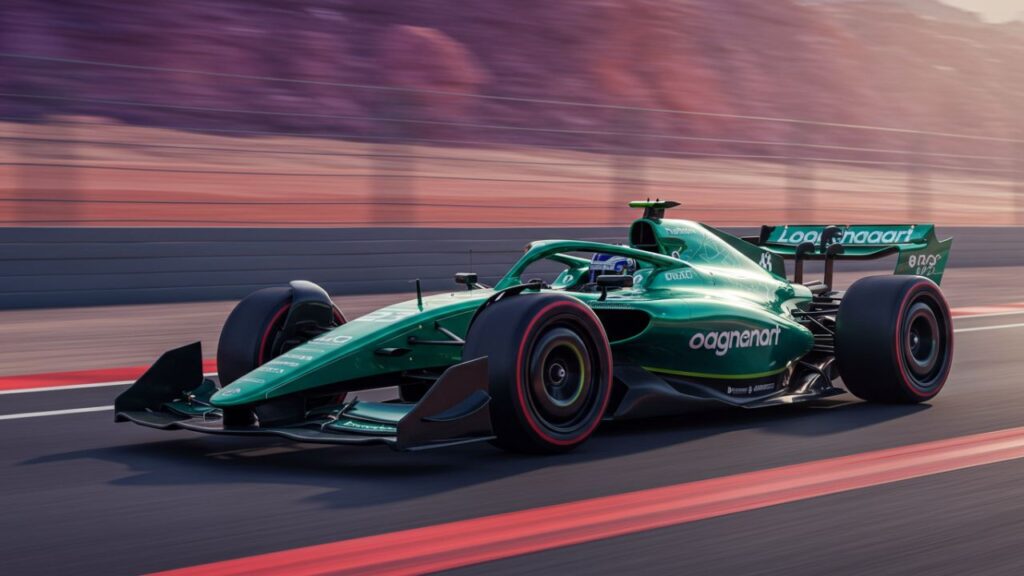In the ever-evolving world of motorsport, a new contender has emerged to reshape the very DNA of racing—formula 43. Blending cutting-edge technology, eco-conscious innovation, and direct fan involvement, formula 43 isn’t just a new league—it’s a glimpse into the future of competitive racing. While traditional formats like Formula 1 or NASCAR dominate the headlines, formula 43 is carving out a space for itself by being smarter, cleaner, and more connected to the people who matter most: the fans.
Designed with accessibility, sustainability, and entertainment in mind, formula 43 is not only making racing more engaging but also more inclusive. This article explores every facet of formula 43—from its history and goals to its cars, formats, and the revolutionary ways it’s changing motorsport forever.
formula 43: A New Era of Motorsport Begins
Formula 43 was born out of a simple but powerful idea: make motorsport exciting and relevant to the 21st century. Traditional racing formats, while thrilling, have often been criticized for their high costs, environmental impact, and lack of diversity. Formula 43 addresses these issues by offering a balanced, modern racing experience with equal opportunities for teams and drivers.
Launched in the early 2020s, formula 43 aimed to combine the speed and excitement of motorsport with the ethics of sustainability and the power of digital interactivity. From day one, it was positioned not just as a new racing league, but as a tech-driven experience for a new generation of fans.
formula 43 Vehicle Technology and Design
The backbone of formula 43 is its innovative vehicle technology. Unlike traditional combustion-powered cars, formula 43 vehicles are powered by hybrid-electric or fully electric engines. This decision not only reduces emissions but also makes the races quieter and more environmentally friendly.
Each formula 43 car is designed around the following core principles:
-
Standardized chassis to ensure a level playing field for all competitors
-
Lightweight carbon composite materials to increase speed and safety
-
Electric or hybrid powertrains that promote sustainability and reduce noise pollution
-
Modular components that are easy to replace and repair, lowering team costs
-
Advanced onboard telemetry for real-time data monitoring and feedback
These cars are not only powerful but smart—constantly communicating with team engineers and fans via streaming platforms and digital dashboards.
formula 43 Race Format: Fast, Fair, and Fan-Focused
Traditional races can be long, complex, and sometimes hard to follow for casual viewers. Formula 43 throws the rulebook out the window and introduces a format that’s short, punchy, and highly interactive. Each race weekend typically includes:
-
Practice rounds to help teams calibrate performance
-
Sprint qualifiers that decide grid positions
-
Main event races capped at 45–60 minutes for fast-paced action
-
Fan-powered bonuses, such as “power laps” or strategic advantages unlocked via live voting
What really sets formula 43 apart is its interactivity. Fans watching the race online or through an app can vote on race modifiers, participate in trivia for bonus points, and even choose the layout of certain tracks. This isn’t just viewing—it’s racing with participation.
formula 43 Tracks and Race Locations
The tracks in formula 43 aren’t your typical race circuits. Instead of sticking to purpose-built racetracks, the series embraces innovation with a mix of:
-
Urban street circuits that turn city centers into arenas
-
Parkland and eco-friendly tracks that emphasize green environments
-
Hybrid courses combining asphalt with gravel or off-road segments for added excitement
-
Pop-up circuits in unconventional locations like airports, deserts, or coastal roads
By taking races out of rural tracks and into accessible locations, formula 43 brings the action closer to the people—reducing travel emissions and making live viewing more inclusive.
Drivers and Teams in formula 43
The talent pool in formula 43 is diverse, young, and hungry. Unlike legacy series that often require millions in sponsorships and long training pipelines, formula43 teams scout talent from:
-
Karting championships
-
E-motorsport tournaments and simulators
-
STEM-focused racing academies
-
Youth leagues and school programs
Teams are leaner, smarter, and more adaptive. Rather than relying on massive budgets, they depend on efficient data analytics, strategic pit calls, and innovative race-day decisions. Women, minorities, and global talent have found more open doors in formula43 than in many traditional leagues.
Environmental Leadership in formula 43
One of the league’s biggest achievements is its commitment to green innovation. The formula43 organizers ensure that each event follows strict sustainability protocols:
-
Solar charging stations for electric race cars
-
Recyclable materials used for signage, barriers, and promotional materials
-
Carbon-neutral logistics planning with local transport and offsetting initiatives
-
Waste-free events with composting and zero single-use plastics
Every decision, from tire sourcing to fan merchandise, is considered through an environmental lens. Formula43 doesn’t just talk the talk—it races the race for the planet.
How Fans Experience formula 43
Spectators are no longer passive. In formula43, they’re part of the strategy:
-
Live interaction through apps lets fans vote on pit stop windows, weather mode toggles, or deployable bonuses
-
Real-time trivia offers fans the chance to win virtual trophies or influence the grid lineup
-
In-race chatrooms connect global fans and let influencers commentate alongside professionals
-
Onsite AR/VR stations allow fans to explore cars in 3D or sit inside a driver’s cockpit virtually
By placing fans at the center of the action, formula43 is not just a show—it’s a shared experience.
Broadcasting and Media Integration
Formula43 understands that today’s fans are digital natives. That’s why races are streamed through:
-
Social media platforms like YouTube, Twitch, and Facebook Live
-
Dedicated mobile apps with stat overlays and fan dashboards
-
AR-enhanced smart glasses and headsets for immersive viewing
-
Short-form highlights created immediately after races for Instagram, TikTok, and Snapchat
Commentators include a mix of seasoned racers, esports influencers, and engineers, giving viewers multiple angles and insights. It’s motorsport made for the modern viewer.
Challenges and Growth Opportunities
No revolution is without roadblocks. Formula still faces challenges like:
-
Establishing a consistent global calendar
-
Securing large-scale brand sponsorships without compromising values
-
Maintaining competitive integrity with fan-driven mechanics
-
Avoiding burnout among teams adapting to fast innovation cycles
That said, the league also has immense room to grow:
-
Launching regional circuits across Asia, Africa, and South America
-
Expanding into educational initiatives and youth racing programs
-
Introducing women-only team leagues or co-ed driver pairings
-
Building a fantasy racing platform tied to real-time race metrics
Conclusion
Formula 43 is not just a racing league—it’s a movement. A movement that brings together speed, sustainability, technology, and inclusivity. It shows that motorsport can be thrilling without being harmful to the planet or exclusive to the wealthy. By involving fans directly and embracing innovation at every level, formula is building a more dynamic, diverse, and digital racing world.







